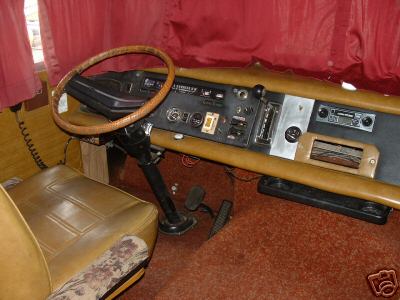

You can also look for similar color variations since some manufacturers may have unique variations. Here is a breakdown of the usual colors found in a wiring diagram:īy recognizing these main colors and their meanings, you can interpret the wiring diagram easier. Just like the power line mentioned earlier, each wire has its own color and name. Analyzing Color Coding for Easier Organization Color-coding is applied to the 1973 Winnebago Brave wiring diagram and helps differentiate it from regular electrical drawings. Other icons include lines, trunks, arrows, and rectangles that help define items on the diagram and keep it organized. For example, a star icon stands for a motor and a light bulb for an indicator.

With icons, you can determine what type of device or component is connected, from switches, sensors, fuses, and terminals. The icons used in a 1973 Winnebago Brave wiring diagram are necessary to ensure the proper interpretation of electrical signals and information in the camper. These help you more easily identify the power lines and other wiring components. Additionally, each line represents a wire with specific color codes. This feeds the electric power required to run the vehicle components. The main line is the "power line" which is usually colored red. Getting to Know the Wire Driving Power A wiring diagram is composed of several different lines that symbolize the electrical connections in the vehicle.
#1973 WINNEBAGO BRAVE HOW TO#
Knowing how to read and interpret a 1973 Winnebago Brave wiring diagram can help diagnose any problems under the hood and make sure your next road trip is as successful as possible. But to achieve its abilities, the wiring within the Winnebago Brave must be intact. With engines up to 200 horspower, air conditioning, and multiple counter configurations, it's no surprise that this RV was popular. Since its launch in 1973, the Winnebago Brave has been a beloved camper and RV for many road-trippers and vacationers. This article will explore the circuits and connections associated with this powerful recreational vehicle. The 1973 Winnebago Brave has a unique design that requires its own unique wiring diagram. From mechanics and engineers, to DIYers and troubleshooters, wiring diagrams allow anyone to quickly comprehend the complexity underneath the hood of a given car. For a modern touch, engine swaps range from the Cummins diesel to a Turbo LS, but you’d have to travel enough to justify the time and expense.Exploring the 1973 Winnebago Brave Wiring Diagram The wiring diagram of a vehicle is an essential tool to understand how all of its components work together. I’ve heard RV owners saying their fuel mileage in MPG barely changes when towing a vehicle, “Ten with… 11 without.” If you’re worried about gas mileage, move along now. The trailer hitch suggests a tow-behind vehicle or boat may have further strained the little Brave’s 440 at some point.

Speaking of power plants, the venerable Dodge 440 cid (7.2L) V8 promises reasonable thrust to push this brick-shaped object down the road. The dashboard offers plenty of vital information and controls, though the styling comes right from a 1960s industrial power plant. Orange carpet keeps it all “mod” in this ’70s rolling castle. The western blanket probably covers a worn driver’s seat cushion. Be sure to check out the seller’s humorous comments on this topic. The interior looks better than many 20 year-old motor homes I’ve seen. The odometer shows 37,000 miles, not unheard of for a vintage motor home, but in fairness the owner says it could be 137. The front differential dispels any notion that the seller may simply have seen “4×4” on the front hubs of a 2WD chassis and mistakenly boasted of two drive axles. As we go to press, one brave bidder has pledged $4000 to own this 4×4 adventure cabin on wheels. Described as “great running” and “fun to drive,” this 20-foot Dodge-chassis (D20) RV can be yours for the high bid here on eBay. Wind resistance aside, this 1973 Winnebago D20 “Brave” in American Fork, Utah appears ready for adventure, and it’s the only one of this era I’ve seen with four-wheel drive! That brow jutting out over the windshield may cup the wind, but it also houses the front bunk, a perfect place to stash children or spry adults for the night. Other than a parachute, few things look as non-aerodynamic as a vintage Winnebago.


 0 kommentar(er)
0 kommentar(er)
